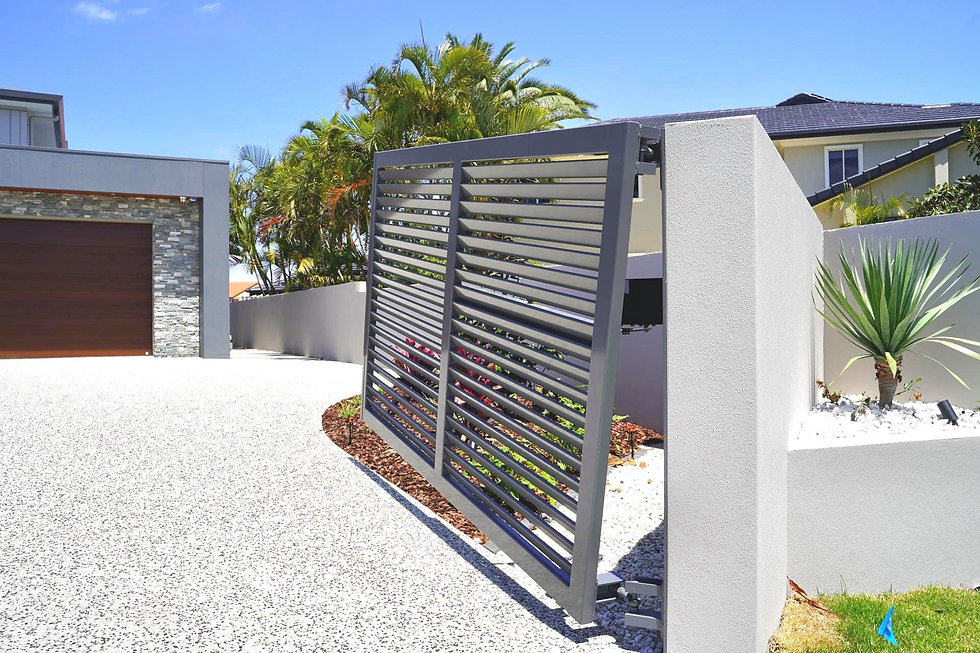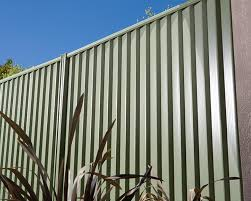Top Installation Issues with Swing Gates on Sloped Driveways in Eltham & Montmorency
- Luu Vinh
- 2 days ago
- 4 min read
Eltham and Montmorency are two leafy suburbs of Melbourne, renowned for their sloping landscapes, distinctive architectural homes, and natural surroundings. Among the most popular choices is the swing gate, valued for its elegant design, timeless appeal, and compatibility with both modern and traditional homes.
In this article, Latitude Fencing & Gate explores the top installation issues with swing gates on sloped driveways in Eltham and Montmorency, and provides practical solutions that local homeowners can consider, whether that means a customized installation or opting for alternative designs, such as sliding or telescopic gates.
Why Sloped Driveways Pose a Challenge for Swing Gates

Swing gates operate on a simple principle: they pivot on hinges attached to sturdy posts, swinging inward or outward to allow access. On flat ground, this system works seamlessly, providing a smooth and reliable opening motion.
But in suburbs like Eltham and Montmorency, where many driveways are built on inclines, the equation changes drastically. Here’s why:
Ground clearance becomes limited – the bottom edge of the gate may scrape against the slope.
Uneven pressure on hinges and posts – sloped surfaces create additional stress that can warp or misalign gates.
Restricted swing radius – the angle of the slope can prevent the gate from opening fully.
Simply put, a swing gate is designed for flat surfaces. When you introduce an incline, every technical factor—from alignment to automation—becomes more complex.
Top Installation Issues with Swing Gates on Slopes
1. Ground Clearance Problems
One of the most common issues with swing gates on slopes is ground clearance. On a flat driveway, the gate swings freely without obstruction. On a sloped driveway, however, the lower edge of the gate often collides with the surface.
In Montmorency, for example, where driveways frequently incline sharply toward the street, homeowners often find that a standard swing gate design simply cannot open without dragging across the ground. This not only damages the gate but also wears down the driveway surface.
2. Uneven Gate Alignment

Slopes can cause gates to become misaligned during installation. When the posts are not perfectly level due to uneven terrain, the gate leaves visible gaps when closed or fails to latch properly.
Misalignment also compromises aesthetics—something particularly concerning for homeowners in Eltham, where street appeal and architectural harmony are highly valued.
3. Stress on Hinges and Posts
A sloped driveway creates extra torque and pressure on hinges and gate posts. Instead of carrying the gate’s weight evenly, the hinges are forced to support the added resistance caused by the incline.
Over time, this leads to:
Loosening hinges.
Warped or leaning posts.
Increased maintenance costs.
If left unaddressed, the stress can shorten the lifespan of the entire gate system.
4. Water Drainage & Erosion Issues

Eltham and Montmorency are green suburbs with significant rainfall during Melbourne’s wetter months. A sloped driveway naturally channels water downhill, and if drainage isn’t properly accounted for, erosion around gate posts becomes a major issue.
When soil erodes, posts lose stability, which directly affects the swing gate’s structural integrity. Even the most robust timber or aluminium posts can eventually shift or tilt, compromising functionality.
5. Limited Swing Radius
Swing gates need space to open. On a sloped driveway, the incline or surrounding retaining walls may restrict the swing radius. This is particularly problematic with double swing gates, which require symmetrical clearance on both sides.
In steep areas of Montmorency, many homeowners discover too late that their swing gates cannot fully open due to slope interference.
6. Automatic System Malfunctions
Automation adds convenience, but it also increases complexity. Motors on an automatic swing gate must work harder on sloped driveways, as the resistance is greater than on flat ground.
Common issues include:
Motors overheating.
Sensors are malfunctioning due to uneven surfaces.
Safety systems (e.g., obstruction detection) are triggering incorrectly.
This can make an automatic gate unreliable, which defeats its primary purpose—providing effortless access.
Possible Solutions & Alternatives
While swing gates on slopes are challenging, they are not impossible. With the right engineering and planning, homeowners in Eltham and Montmorency can still achieve a functional and attractive solution.
1. Custom Engineering & Adjustable Hinges
One effective solution is the use of rising hinges or adjustable pivot systems. These allow the gate to “lift” slightly as it swings open, compensating for the slope. Although more expensive, this option preserves the look of a swing gate while adapting to uneven terrain.
2. Switching to Sliding or Telescopic Gates
For steep driveways, the most practical solution may be to replace swing gates with sliding gates or telescopic gates.
Sliding gates run parallel to the fence line and are unaffected by slope.
Telescopic gates are perfect for narrow blocks in suburbs like Eltham, as they retract into sections and save space.
These alternatives are particularly recommended when the slope is too severe for even engineered swing gates to function properly.
3. Reinforced Gate Posts & Proper Drainage
Strong posts are critical. Using reinforced concrete bases and steel posts ensures better stability on slopes. Additionally, installing adequate drainage systems around the posts prevents erosion.
This is especially important in Montmorency, where clay-rich soil is prone to shifting after heavy rain.
4. Professional Installation & Local Expertise
DIY installation may be tempting, but with sloped driveways, local expertise is invaluable. Installers familiar with Eltham and Montmorency’s terrain can anticipate slope-related issues and customise solutions accordingly.
Choosing professionals also ensures compliance with local council regulations and building codes, saving homeowners from costly mistakes.
Cost Considerations for Homeowners
Installing a swing gate on a sloped driveway typically incurs higher costs than on flat terrain. Some factors include:
Specialised hinges and custom fabrication.
Reinforced posts and concrete footings.
Additional labour hours for precise installation.
Upgraded automation systems to handle slope resistance.
On average, homeowners can expect to pay 20–40% more for a sloped installation. In contrast, opting for a sliding or telescopic gate may provide a more cost-effective long-term solution, even if the upfront price seems higher.
Ultimately, the key is to balance aesthetics, functionality, and budget—choosing a gate solution that enhances property value without becoming a maintenance burden.
Conclusion
Swing gates are a timeless choice, admired for their elegance and traditional style. Yet, on sloped driveways in Eltham and Montmorency, they present unique installation challenges, including clearance issues, misalignment, hinge stress, erosion risks, restricted swing radius, and automation malfunctions.
The good news is that with the right engineering—such as rising hinges, reinforced posts, and proper drainage—or by considering alternatives like sliding and telescopic gates, homeowners can still enjoy a beautiful and functional front entrance.




Comments